The Analysis and Design of a High Efficiency Piezoelectric Harvesting Floor with Impacting Force Mechanism
Abstract
:1. Introduction
2. Theoretical Analysis of Piezoelectric Cantilever Beam with Free Vibration
2.1. Deformation Analysis
2.2. Electric Generating Analysis
3. Electric Harvesting Measurement with Free Vibration
4. Design and Testing of Piezoelectric Harvesting Floor
5. Discussion
6. Conclusions
Author Contributions
Funding
Institutional Review Board Statement
Informed Consent Statement
Data Availability Statement
Acknowledgments
Conflicts of Interest
References
- Lazaro, A.; Villarino, R.; Girbau, D. A Survey of NFC Sensors Based on Energy Harvesting for IoT Applications. Sensors 2018, 18, 3746. [Google Scholar] [CrossRef] [PubMed] [Green Version]
- Vullers, R.; van Schaijk, R.; Doms, I.; Van Hoof, C.; Mertens, R. Micropower energy harvesting. Solid State Electron. 2009, 53, 684–693. [Google Scholar] [CrossRef]
- Mitcheson, P.; Miao, P.; Stark, B.; Yeatman, E.; Holmes, A.; Green, T. MEMS electrostatic micropower generator for low frequency operation. Sens. Actuators A Phys. 2004, 115, 523–529. [Google Scholar] [CrossRef] [Green Version]
- Glynne-Jones, P.; Tudor, M.; Beeby, S.; White, N. An electromagnetic, vibration-powered generator for intelligent sensor systems. Sens. Actuators A Phys. 2004, 110, 344–349. [Google Scholar] [CrossRef] [Green Version]
- Jintanawan, T.; Phanomchoeng, G.; Suwankawin, S.; Kreepoke, P.; Chetchatree, P. Design of Kinetic-Energy Harvesting Floors. Energies 2020, 13, 5419. [Google Scholar] [CrossRef]
- Elahi, H.; Eugeni, M.; Gaudenzi, P. A Review on Mechanisms for Piezoelectric-Based Energy Harvesters. Energies 2018, 11, 1850. [Google Scholar] [CrossRef] [Green Version]
- Rastegar, J.; Pereira, C.; Nguyen, H.-L. Piezoelectric-based power sources for harvesting energy from platforms with low-frequency vibration. In Proceedings of the SPIE Smart Structures and Materials + Nondestructive Evaluation and Health Monitoring, San Diego, CA, USA, 26 February–2 March 2006. [Google Scholar] [CrossRef]
- Erturk, A.; Inman, D.J. A distributed parameter electromechanical model for cantilevered piezoelectric energy harvesters. J. Vib. Acoust. 2008, 130, 041002. [Google Scholar] [CrossRef]
- Cornwell, P.J.; Goethal, J.; Kowko, J.; Damianakis, M. Enhancing Power Harvesting Using a Tuned Auxiliary Structure. J. Intell. Mater. Syst. Struct. 2005, 16, 825–834. [Google Scholar] [CrossRef]
- Shahruz, S. Design of mechanical band-pass filters for energy scavenging. J. Sound Vib. 2006, 292, 987–998. [Google Scholar] [CrossRef]
- Umeda, M.; Nakamura, K.; Ueha, S. Analysis of the Transformation of Mechanical Impact Energy to Electric Energy Using Piezoelectric Vibrator. Jpn. J. Appl. Phys. 1996, 35, 3267–3273. [Google Scholar] [CrossRef]
- Fu, H.; Yeatman, E.M. Effective piezoelectric energy harvesting using beam plucking and a synchronized switch harvesting circuit. Smart Mater. Struct. 2018, 27, 084003. [Google Scholar] [CrossRef] [Green Version]
- Tang, Q.C.; Yang, Y.L.; Li, X. Bi-stable frequency up-conversion piezoelectric energy harvester driven by non-contact magnetic repulsion. Smart Mater. Struct. 2011, 20, 125011. [Google Scholar] [CrossRef]
- Xue, T.; Roundy, S. Analysis of Magnetic Plucking Configurations for Frequency Up-Converting Harvesters. J. Phys. Conf. Ser. 2015, 660, 012098. [Google Scholar] [CrossRef]
- Lei, G.; Carol, L. Impact-driven, frequency up-converting coupled vibration energy harvesting device for low frequency operation. Smart Mater. Struct. 2011, 20, 045004. [Google Scholar]
- Jacquelin, E.; Adhikari, S.; Friswell, M.I. A piezoelectric device for impact energy harvesting. Smart Mater. Struct. 2011, 20, 105008. [Google Scholar] [CrossRef]
- Pozzi, M.; Aung, M.S.; Zhu, M.; Jones, R.K.; Goulermas, J.Y. The pizzicatoknee-joint energy harvester: Characterization with biomechanical data and the effect of backpack load. Smart Mater. Struct. 2012, 21, 075023. [Google Scholar] [CrossRef]
- Abdal, M.; Leong, K.S. Piezoelectric Pre-Stressed Bending Mechanism for Impact Driven Energy Harvester. Int. Tech. Postgrad. Conf. Ser. Mater. Sci. Eng. 2017, 210, 012037. [Google Scholar] [CrossRef]
- Pozzi, M. Impulse excitation of piezoelectric bimorphs for energy harvesting: A dimensionless model. Smart Mater. Struct. 2014, 23, 045044. [Google Scholar] [CrossRef] [Green Version]
- Pillatsch, P.; Yeatman, E.M.; Holmes, A.S. Magnetic plucking of piezoelectric beams for frequency up-converting energy harvesters. Smart Mater. Struct. 2014, 23, 025009. [Google Scholar] [CrossRef]
- Kuang, Y.; Zhu, M. Design study of a mechanically plucked piezoelectric energy harvester using validated finite element modelling. Sens. Actuators A Phys. 2017, 263, 510–520. [Google Scholar] [CrossRef]
- Jivkov, V.; Zahariev, E. Cantilever Beam Natural Frequencies in Centrifugal Inertia Field. J. Theor. Appl. Mech. 2018, 48, 37–45. [Google Scholar] [CrossRef]
- Özer, A. Özkan Dynamic and electrostatic modeling for a piezoelectric smart composite and related stabilization results. Evol. Equ. Control Theory 2018, 7, 639–668. [Google Scholar] [CrossRef] [Green Version]
- Erturk, A.; Inman, D.J. An experimentally validated bimorph cantilever model for piezoelectric energy harvesting from base excitations. Smart Mater. Struct. 2009, 18, 025009. [Google Scholar] [CrossRef]
- Lin, J.H. A Study of Rubber Admixture in Concrete on Damping Ratio Property. Master’s Thesis, Architecture, National Cheng Kung University, Tainan, Taiwan, 2007. [Google Scholar]
- Rao, S.S. Mechanical Vibrations, 4th ed.; Pearson Prentice Hall: Upper Saddle River, NJ, USA, 2004; pp. 154–196. [Google Scholar]
- Wang, S.-H.; Tsai, M.-C. Dynamic modeling of thickness-mode piezoelectric transducer using the block diagram approach. Ultrasonics 2011, 51, 617–624. [Google Scholar] [CrossRef] [PubMed]
- Raslan, K.R.; Biswas, A.; Zaim, F.; Sheer, A. Differential Transform Method for Solving Partial Differential Equations with Variable Coefficients. Int. J. Phys. Sci. 2012, 7, 1412–1419. [Google Scholar] [CrossRef] [Green Version]
- Gere, J.M. Mechanics of Materials, 6th ed.; Thomson-Engineering: Denver, CO, USA, 2003; pp. 330–340. [Google Scholar]
- Korshunov, V.; Volobuev, P.S. Exploring of equivalent circuit model of piezoelectric energy harvesters for ultra low-power devices. In Proceedings of the 2015 IEEE East-West Design & Test Symposium (EWDTS), Batumi, Georgia, 26–29 September 2015; pp. 1–4. [Google Scholar] [CrossRef]
- Ikeda, T. Fundamentals of Piezoelectricity; Oxford University Press: Oxford, UK, 1990; pp. 4–8. [Google Scholar]
- Chen, D.K. Field and Wave Electromagnetics, 2nd ed.; Addison-Wesley: Boston, MA, USA, 1989; pp. 43–50. [Google Scholar]
- Yang, Y.; Shi, X.; Lan, H.; Xiao, Z.; Dong, Y.; Liu, Y.; Yang, T. Investigation on behavior of the vibration-based piezoelectric energy harvester array in ultracapacitor charging. Appl. Phys. Lett. 2015, 106, 173902. [Google Scholar] [CrossRef]
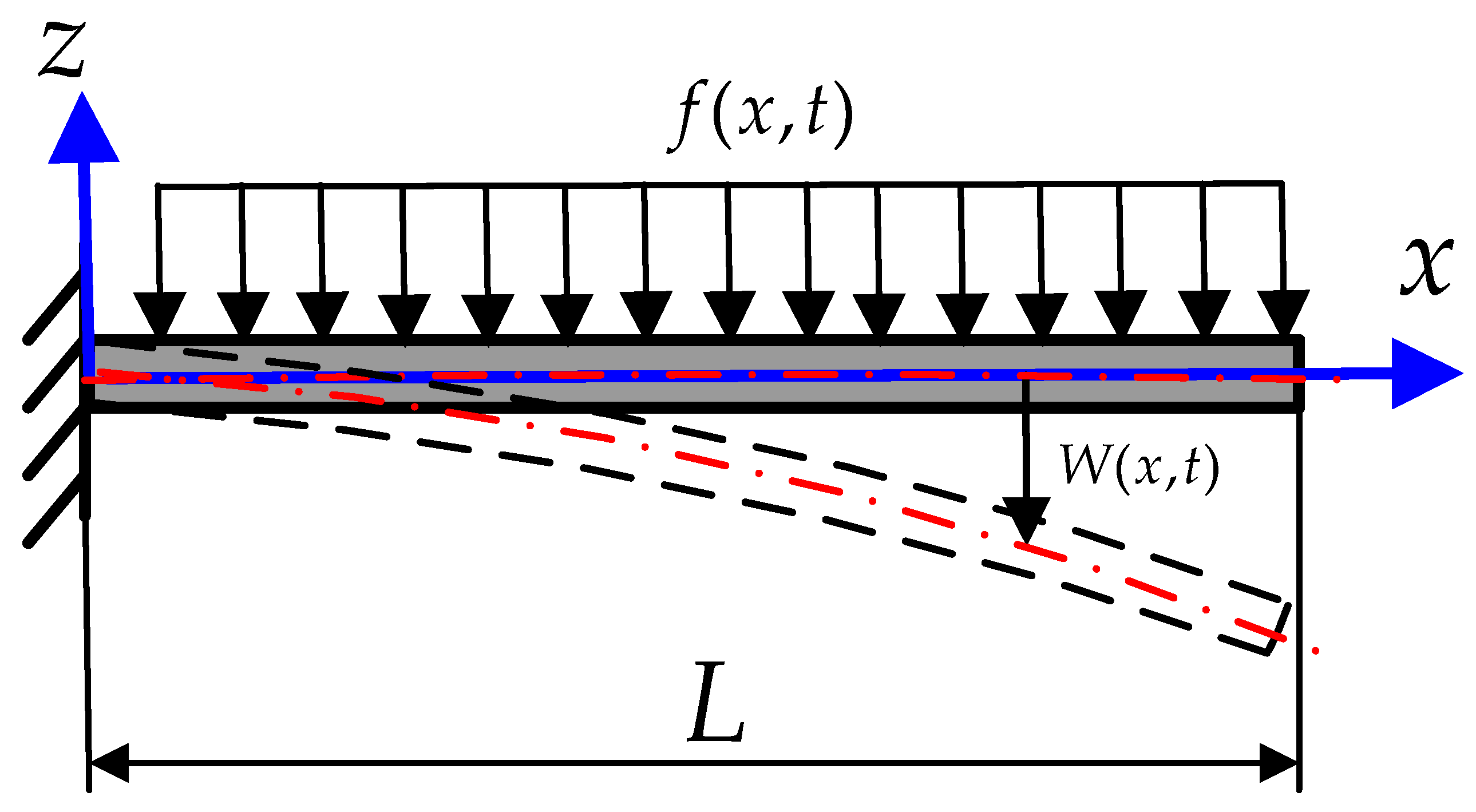
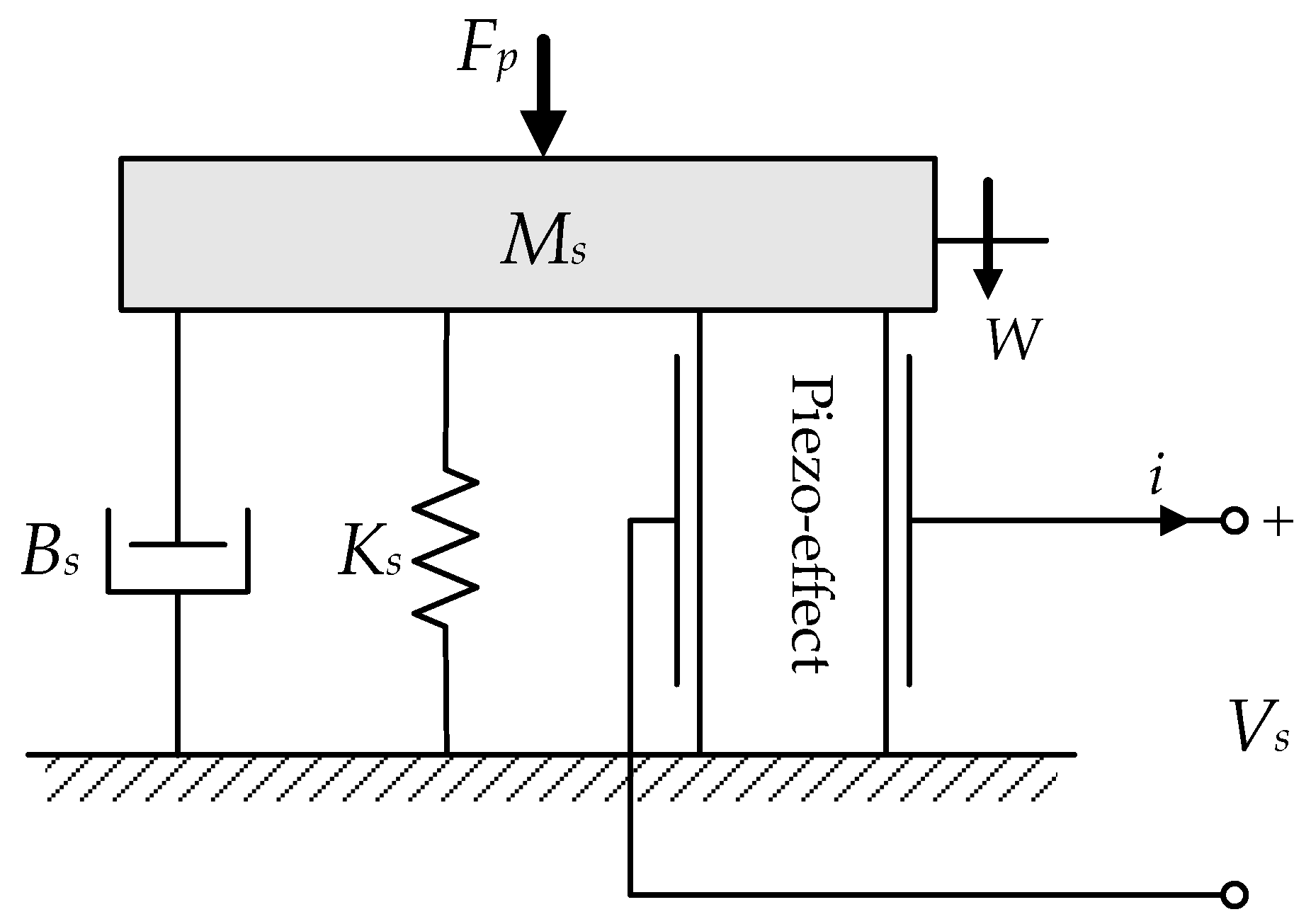



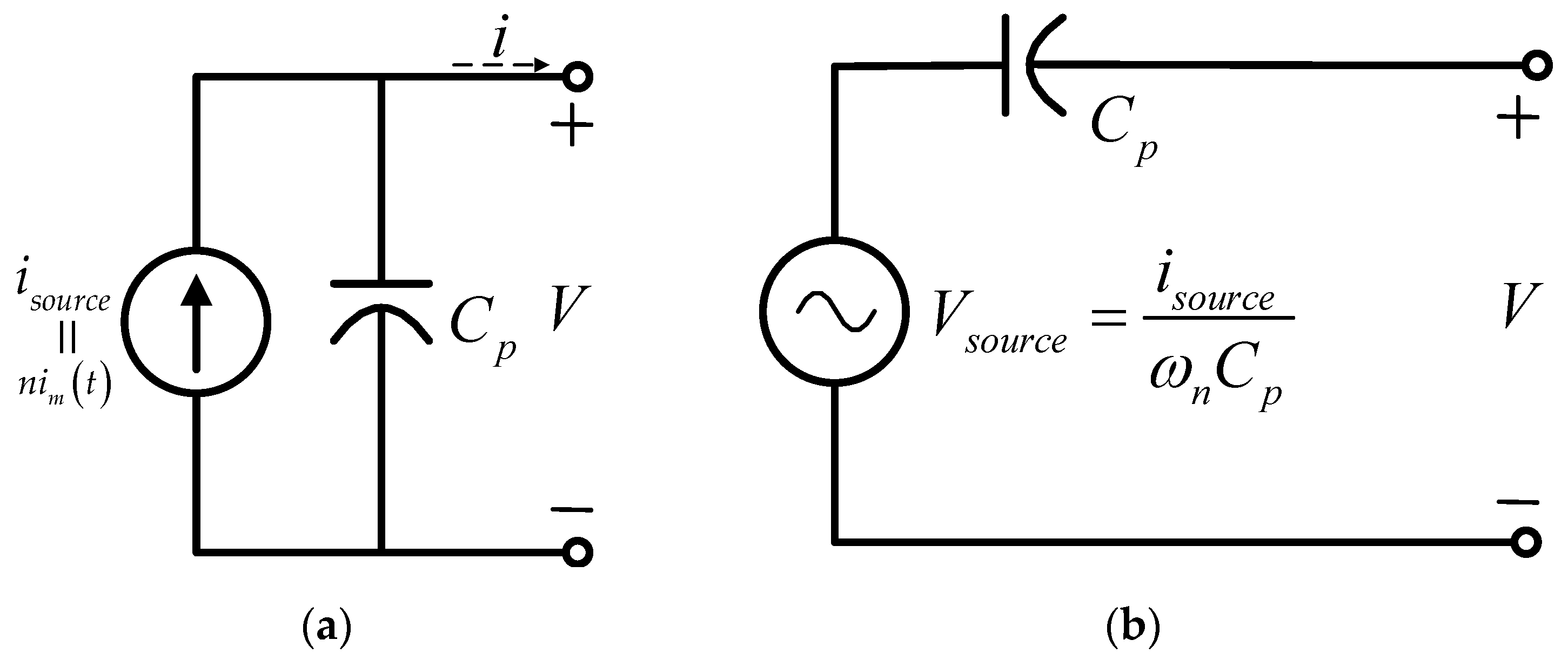

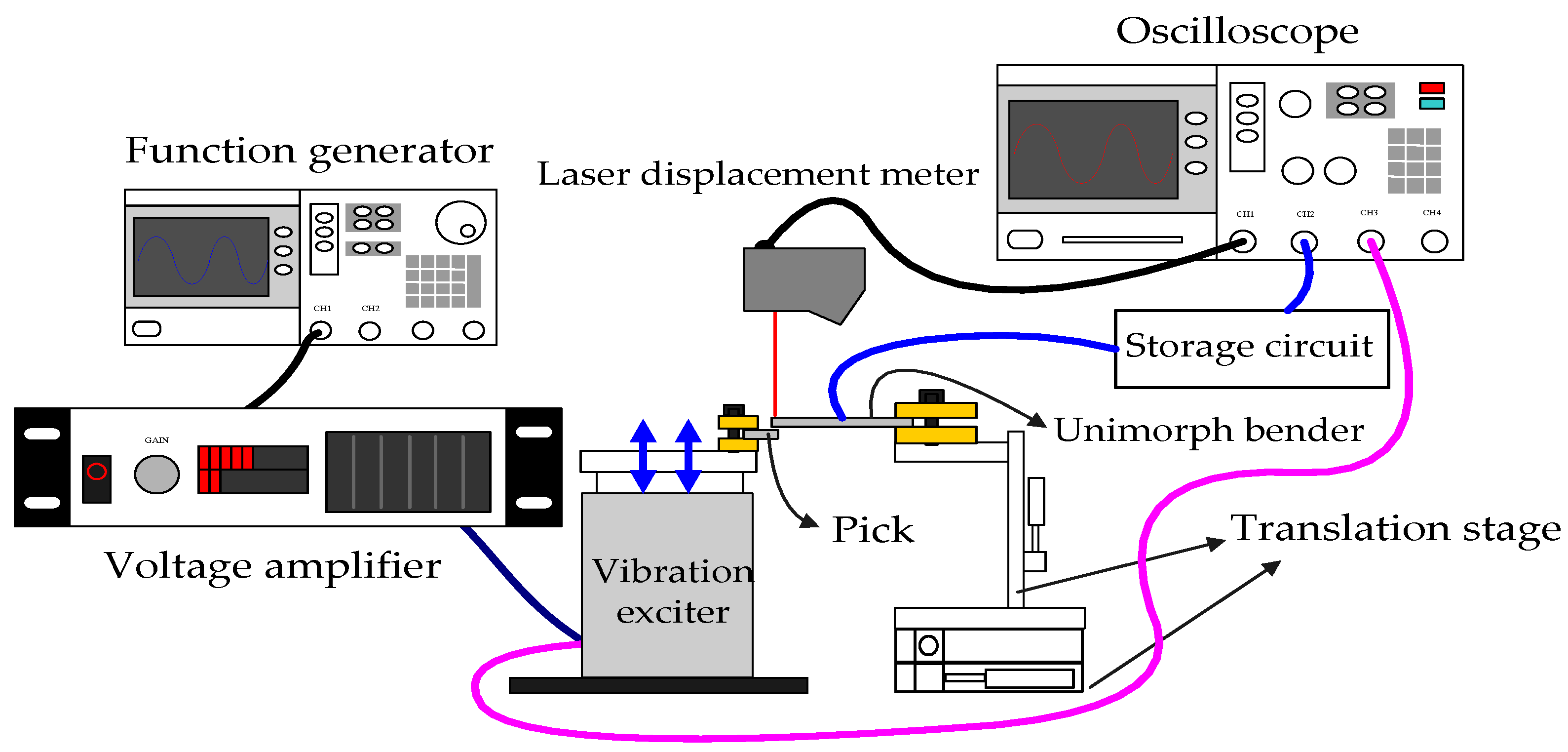
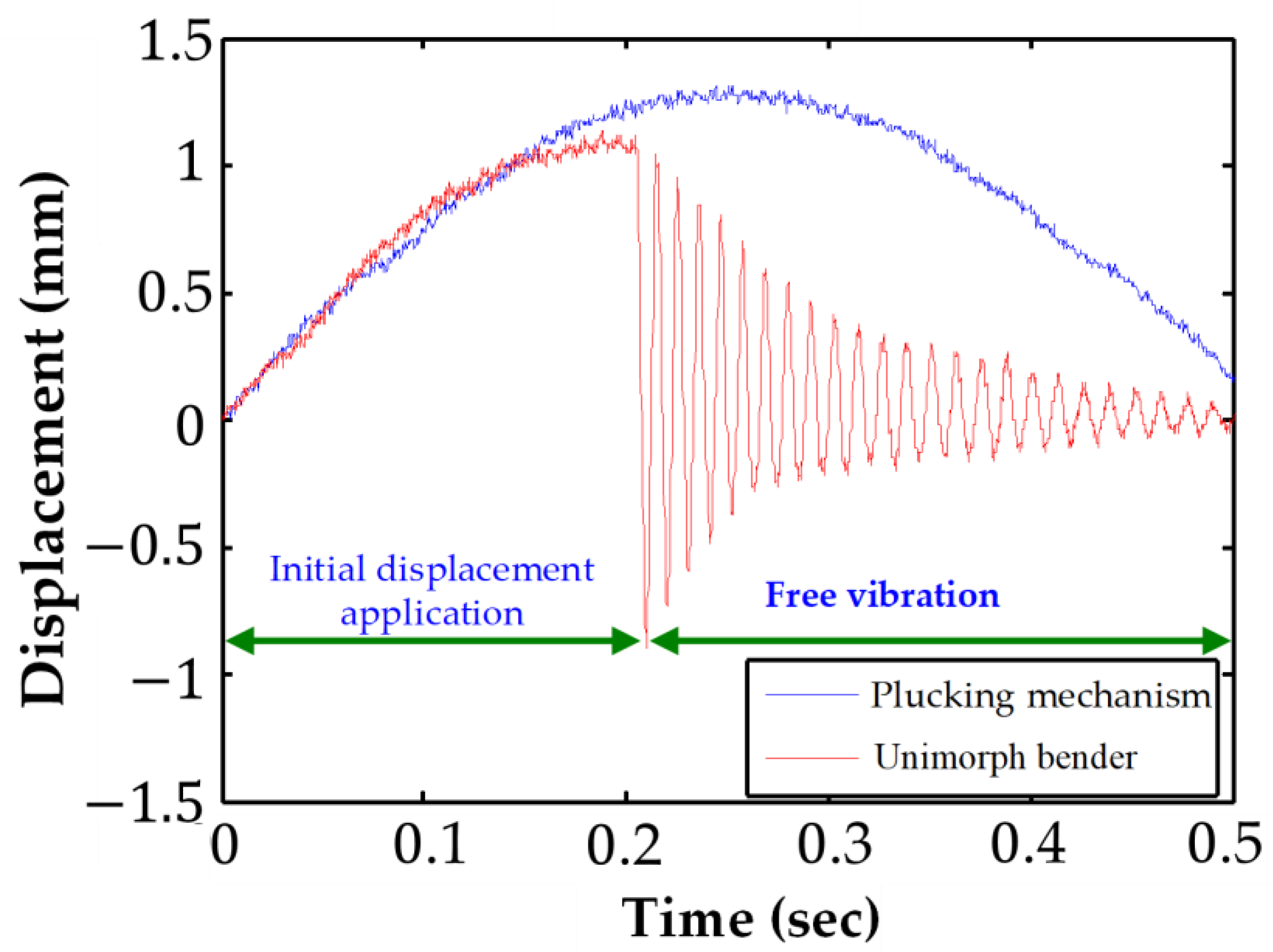
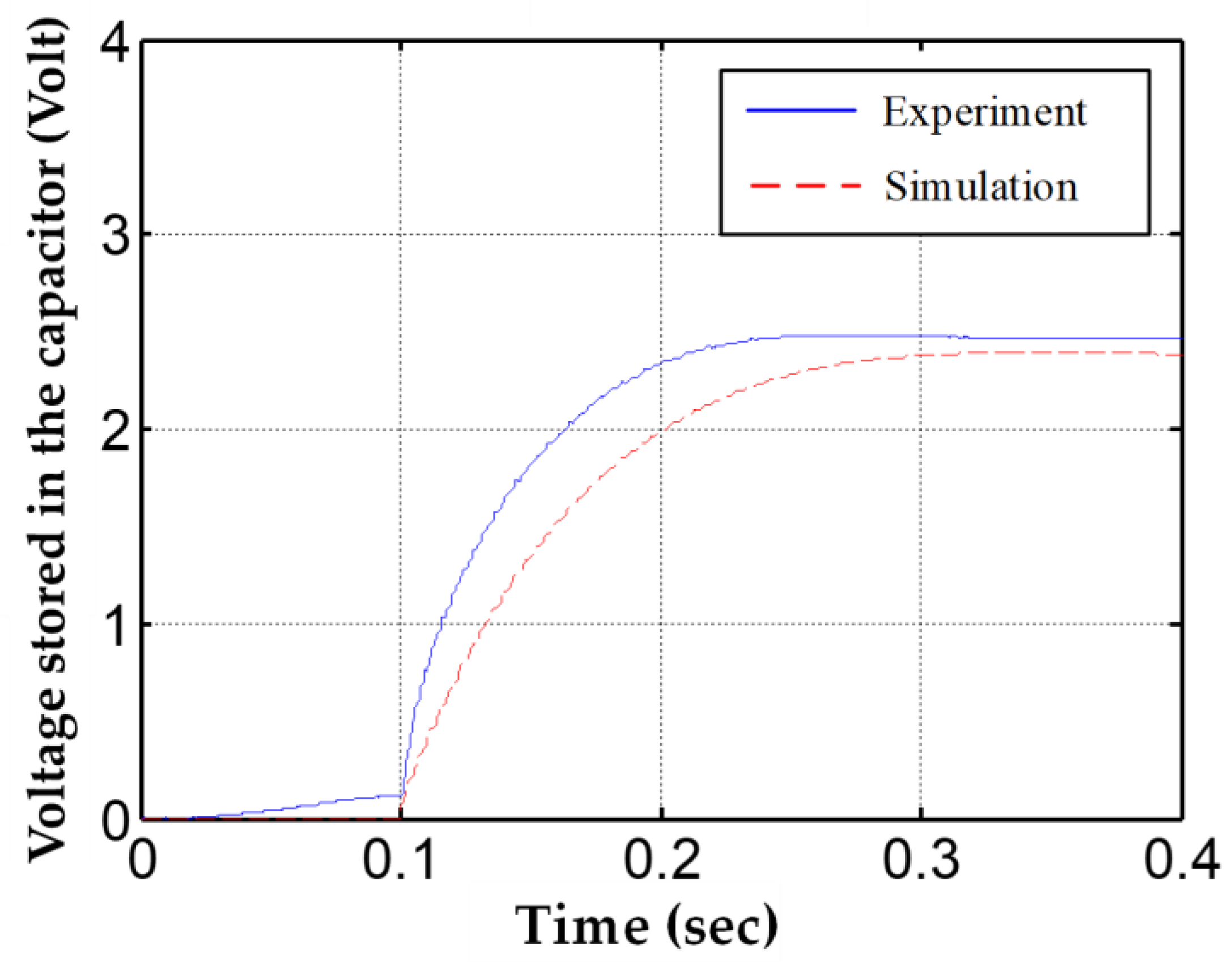

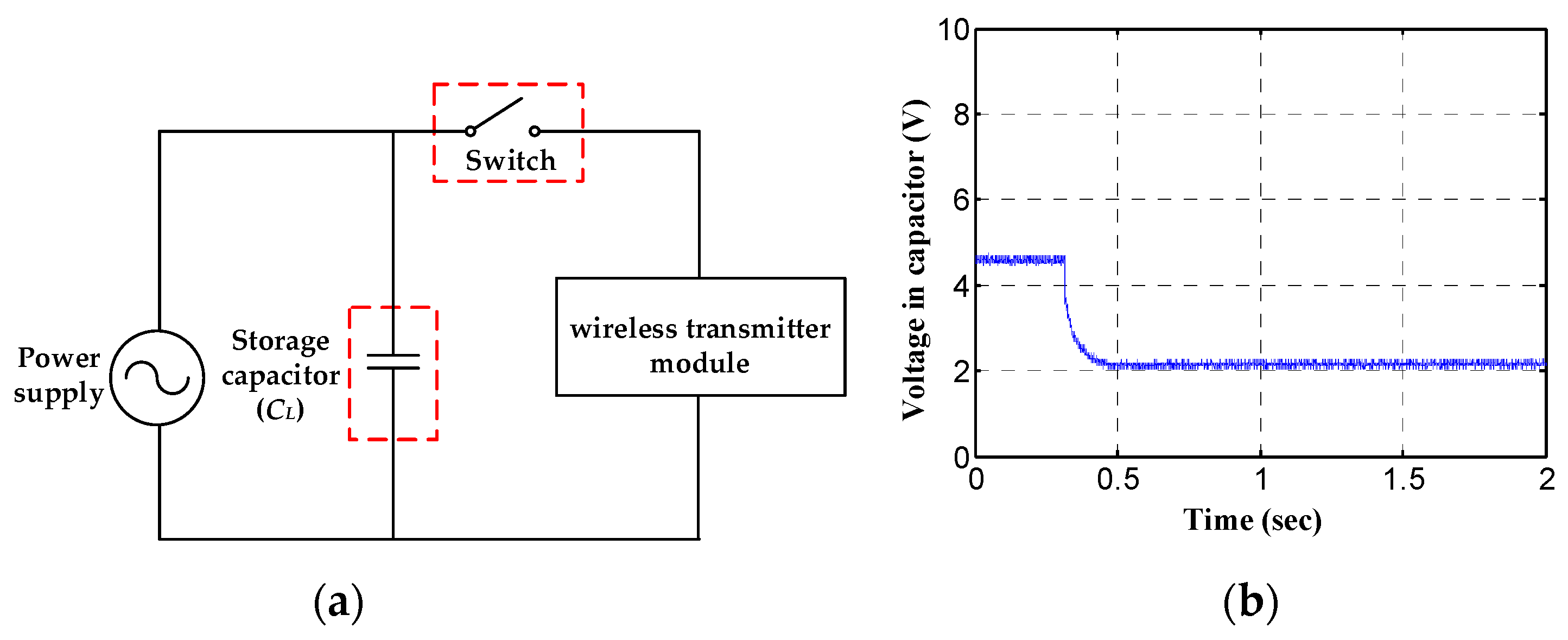
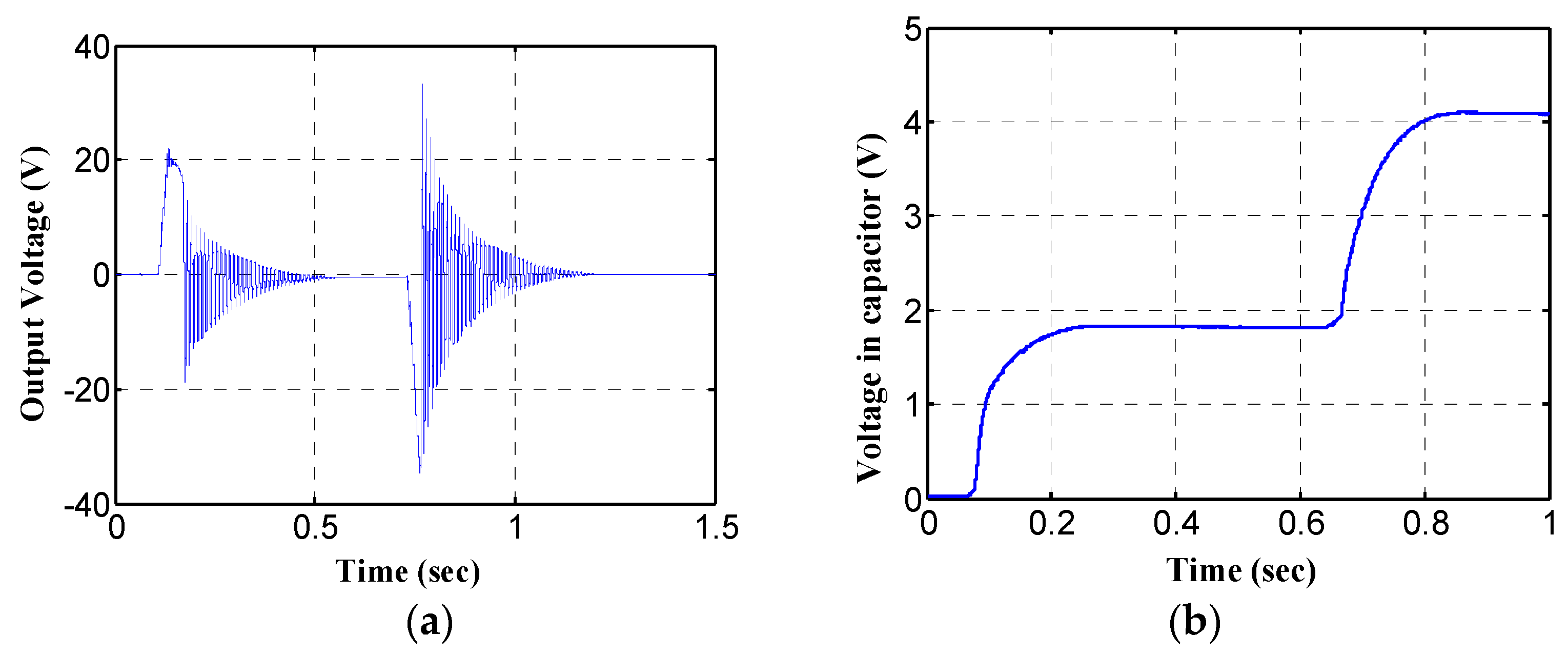
| Ratio Coefficient | Value | Ratio Coefficient | Value |
|---|---|---|---|
| a0 | 0 | b2 | |
| a1 | 0 | b3 | |
| a2 | c0 | ||
| a3 | c1 | ||
| b0 | c2 | ||
| b1 | c3 |
| Piezoelectric Plate | Steel Plate | ||
|---|---|---|---|
| material | PZT-5H | material | SAE 304 |
| Length (Lb) | 30 mm | Length (L) | 58 mm |
| Width (b) | 15 mm | Width (b) | 15 mm |
| Thickness (tp) | 0.3 mm | Thickness (ts) | 0.3 mm |
| Young’s modulus (Ep) | Young’s modulus (Es) | ||
| Piezoelectric charge constant (d31) | Length of section A (La) | 5 mm | |
| Permittivity coefficient () | 3400 | Length of section C (Lc) | 23 mm |
| Permittivity in vacuum ( | Initial deformation () | 1 mm | |
Publisher’s Note: MDPI stays neutral with regard to jurisdictional claims in published maps and institutional affiliations. |
© 2021 by the authors. Licensee MDPI, Basel, Switzerland. This article is an open access article distributed under the terms and conditions of the Creative Commons Attribution (CC BY) license (https://creativecommons.org/licenses/by/4.0/).
Share and Cite
Wang, S.-H.; Tsai, M.-C.; Wu, T.-H. The Analysis and Design of a High Efficiency Piezoelectric Harvesting Floor with Impacting Force Mechanism. Crystals 2021, 11, 380. https://doi.org/10.3390/cryst11040380
Wang S-H, Tsai M-C, Wu T-H. The Analysis and Design of a High Efficiency Piezoelectric Harvesting Floor with Impacting Force Mechanism. Crystals. 2021; 11(4):380. https://doi.org/10.3390/cryst11040380
Chicago/Turabian StyleWang, Sheng-He, Mi-Ching Tsai, and Tsung-His Wu. 2021. "The Analysis and Design of a High Efficiency Piezoelectric Harvesting Floor with Impacting Force Mechanism" Crystals 11, no. 4: 380. https://doi.org/10.3390/cryst11040380






